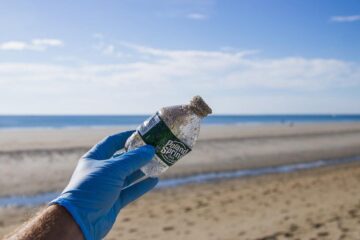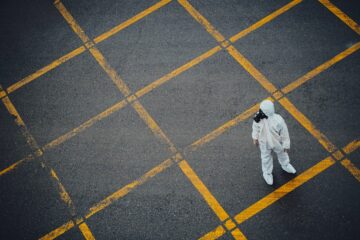Body armor has been with us for thousands of years, but in this case we’re not talking about bamboo slats or chain mail, or those head-to-toe metal suits so popular during the Middle Ages. We’re talking about body armor designed to stop a bullet.(Bulletproof Vests)
That type of body armor has only been with us for about 100 years and did not become widely manufactured and distributed until after Kevlar (1) was developed in the 1960s. Today everyone from the President to deer hunters wear body armor but there are still a lot of misconceptions and misunderstandings regarding what it is and what it is capable of. Body armor typically only covers your chest and torso, if you want full protection, consider a ballistic helmet to protect your head.
Below, we’re going to take a look at some of those misconceptions, along with some other things that simply aren’t widely known about contemporary body armor. Let’s get to it.
1) Bulletproof vests won’t stop every type of bullet
The level of bullet resistance depends on a few things: your distance from the gun being fired, the type of gun used and the type of body armor you’re wearing. Speaking in broad terms, a level IIA/II “soft” vest will stop most handgun rounds fired at a reasonable distance. A level III steel plate or ceramic vest will stop a 7.62 round, but a 7.62 AP (armor piercing) will penetrate.
All center fire rifle rounds will penetrate a level I/II soft vest, even if fired at a considerable distance. As we said, a level III steel plate or ceramic plate carrier vest will stop a 7.62 round. Once you get above that, however, you’ll need a level IV vest. Even then things get dicey. (Note: There is hope, however, in the form of a new vest that will stop a 50 cal round. See the video below.)
The bottom line is that if you’re wearing a Kevlar vest and hoping it will protect you from a handgun fired at arm’s length or an AR15 round, think again.
2) Soft body armor is made of woven fabric
Hard for many people to believe, but it’s true. Kevlar, for instance, is a special fabric woven into layers. There may be as many as 21 layers of this fabric in a “bulletproof” vest today (older vests had as many as 30 layers but the Kevlar wasn’t as robust as it is now). Each layer absorbs some of the energy of the round, dispersing it outward and flattening the bullet.
Each succeeding layer absorbs more energy and deforms the bullet more. With a small caliber handgun fired at 15 feet away it might take 10 – 12 layers to stop the bullet completely. If the handgun is more powerful or the shooter is closer it might take all 21 layers to stop the bullet, if indeed it does stop the bullet.
3) Water may render your bulletproof vest useless
As we just mentioned, soft body armor is made from ultra-strong fabric woven into layers, and being fabric it may be compromised by water. Most body armor is wrapped in a waterproof sleeve, but if the sleeve is compromised and you stand in a downpour or wash your body armor you may render it useless (2).
One way to get around this is to purchase a soft vest whose fabrics have been treated with a waterproof material. They’re out there, and they could save your bacon if for some reason you get in a firefight in the rain.
4) Soft body armor needs to be hung up
If you leave your sweaty jeans crumpled up on the floor they’re going to have wrinkles and folds you may never be able to completely remove. Same with fabric-based body armor. If it somehow gets wet and you leave it in a crumpled mess on the floor, it may wind up fatally compromised.
Remember, while soft armor is made of fabric, it cannot be ironed like your jeans can. If your soft body armor dries with folds in it, that’s it. It’s now compromised and you should start shopping for a replacement. The bottom line: always hang your body armor when you’re not wearing it. You can do that either by hanging it in your closet, or buying a mannequin or making your own makeshift mannequin like you see in the image below.
5) Bulletproof vests are not one-size-fits-all
You can’t just pick up any piece of soft or hard plate body armor and assume it’s going to provide effective protection. It has to be properly fitted (3). If it’s too loose it will flop around when you’re in motion leaving large areas exposed. And if it does take a round it will not dissipate the energy as effectively. There is also female body armor, designed for the female body.
On the other hand if the vest is too tight it will restrict movement and it will likely work its way up your torso, exposing large portions of your vulnerable midsection. Finally, if you put on more than 15 – 20 pounds after purchasing your body armor you should be fitted for a new vest.
6) A bulletproof vest won’t stop a knife
This one surprises a lot of people and understandably so. After all, if something is capable of stopping a bullet traveling at 1,000 feet per second (nearly 700 mph) why wouldn’t it be able to stop something traveling at the speed a hand can swing (60 – 70 mph for most people)?
The answer has to do with the physical difference between a bullet and a knife. A bullet has a rounded (sometimes flat) tip. While the tip of the knife is pointed. Remember, soft vests are made of tightly woven fabric. The tight weave repels rounded objects but will not be able to stop the razor sharp pointy end of a knife blade. For that you’ll need a “stab vest” (4). But even they aren’t foolproof as you’ll see in the video below.
7) A bulletproof vest may save you in a car accident
If you are wearing a Kevlar vest and are involved in a head-on collision at speed with another vehicle the vest may wind up making the difference between life and death (5). Most cars have collapsible steering columns these days and that innovation has saved a lot of lives.
But some older cars do not, and it is still possible to impale oneself on a collapsible steering column if you’re going fast enough. Also, if you are not wearing a seat belt the vest may protect you from impact, not only with the steering column, but with the dashboard as well.




